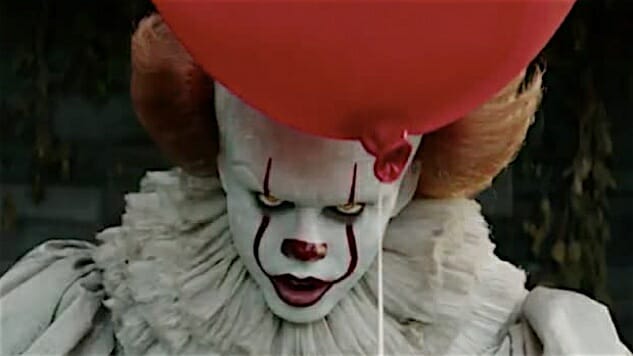It

1. It attempts to scare you in two different ways, and I found myself appreciating the fact that it attempts both more than I admired the execution. On one hand, it’s the story of a bunch of outcast kids who suffer all sorts of indignities and horrors at the hands of schoolmates, parents and even each other but stick together because they’re all they have. On the other, there’s a killer clown who comes up from the sewers and attempts to eat them. Taken on their own, each of these is pretty frightening: Adolescence is hard, and clowns with massive teeth are rather dangerous. But the movie’s attempts to connect the two, to make the terrors involved in each analogous, almost a result of one another, never quite land the way you want them to. It occasionally reminds you of how awful it can be a kid, and It also occasionally makes you jump out of your chair. But it never figures out how to do both at the same time.
2. Based off Stephen King’s beloved bestseller, the film follows seven preteens from Derry, Maine, in the late 1980s—you can tell it’s 1989 because Batman is playing on the multiplex, though the dialogue and setting feel a lot more like the 1950s, when King’s novel was originally set—who are known as The Losers. They have a very 1980s-movie set of afflictions that turn them into outcasts: One’s fat, one’s black, one’s a nerd, one’s a sensitive mama’s boy, one’s Jewish, one’s a girl, one stutters. (The stuttering one is otherwise your traditional leading man hero character.) They do their best to survive the constant assault that is middle school, but then they discover that not only are children going missing from their quaint little town—including the too-cute-to-see-his-arm-bitten-off-by-a-clown little brother of our stuttering hero—but that they’ve in fact gone missing for generations: every 27 years, in fact. They realize that they’re all sharing similar visions of a monster clown named Pennywise (Bill Skarsgard), and that it might be up to them to defeat him, to save themselves, and their whole town.
3. The interaction of the kids has an undeniable, surely not accidental similarity to the kids in Netflix’s hit Stranger Things, to the point that they even share a cast member (Finn Wolfhard, much more foul-mouthed here than in the Netflix show). But scenes of the kids all riding bikes together, E.T.-style, and their decade are all that they share. The kids all have very movie-convenient backstories, when the movie even bothers to give them one at all. (The backstories for the black kid and the fat kid are “he’s black” and “he’s fat.”) One has an abusive father; one has an overprotective mother; one lost his younger brother. Their friendship is one of those things that just sort of happens because the movie needs it to. There’s a quietly nice connection between the girl (Sophia Lillis) and the fat kid (Jeremy Ray Taylor, maybe the standout of the cast; he has a way of possessing wisdom in silence that the other kids don’t), and none of these kids are inherently unlikable, but even as relatable as their struggles (bullies, mostly, until the clown shows up) might be, they never really seem like real kids. They feel like single-pane story constructions.